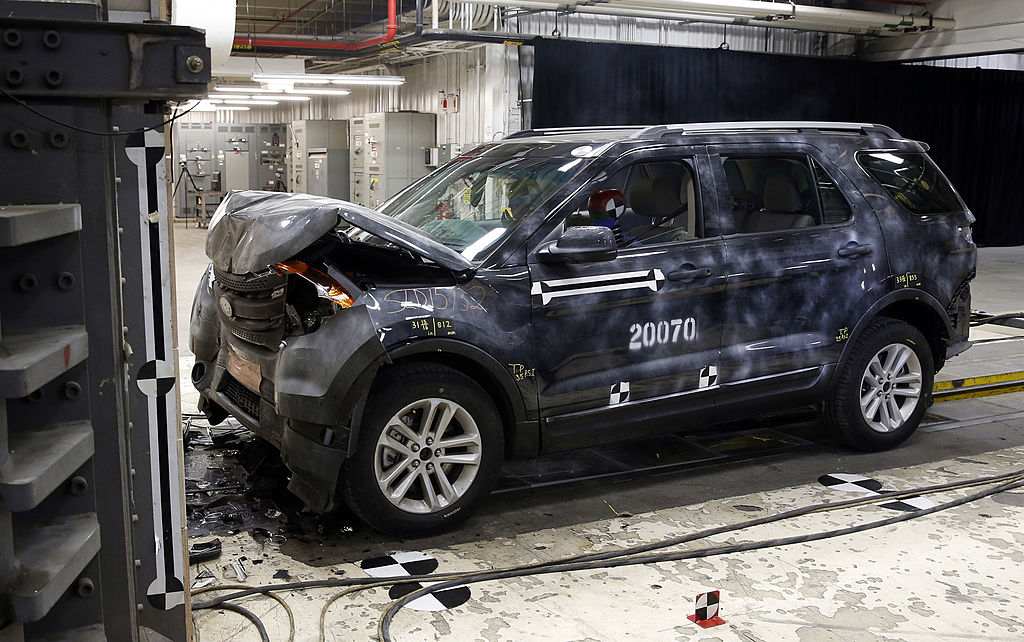When it comes to navigating the roads, safety is a top concern for every driver. In recent years, the popularity of full-size trucks has been on the rise, leaving many wondering if these robust vehicles offer a higher level of safety compared to cars. This article examines the potential advantages and disadvantages of full-size trucks in terms of safety, addressing important factors such as size, weight, and technology. By delving into the data and expert insights, this exploration aims to shed light on the question: are full-size trucks truly safer than cars?
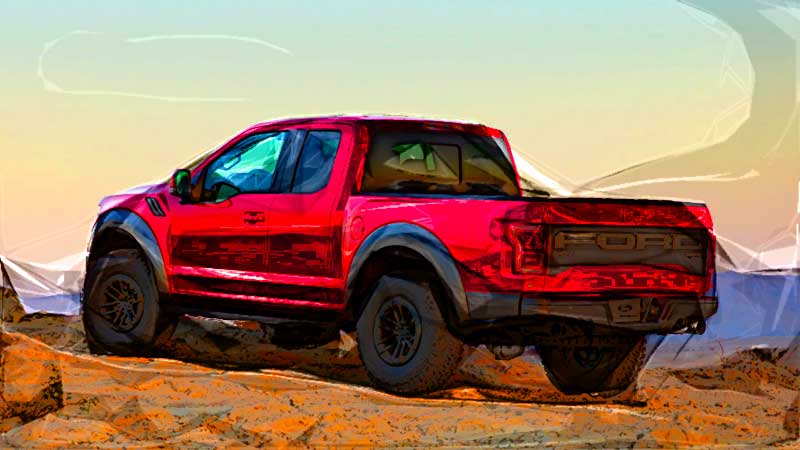
This image is property of trevinolaw.com.
Safety Features in Full Size Trucks
Advanced Braking Systems
Full size trucks are equipped with advanced braking systems, which enhance their safety on the road. These systems include features such as anti-lock brakes (ABS), which prevent the wheels from locking up during sudden stops. This significantly reduces the risk of skidding and allows for more controlled braking. Additionally, some trucks are equipped with electronic brake-force distribution (EBD), which adjusts the amount of brake force applied to each wheel. This ensures that braking is distributed evenly, optimizing stopping power and minimizing the chances of a loss of control.
Stability Control
One of the key safety features found in full size trucks is stability control. This technology utilizes sensors to detect if the vehicle is not responding as intended, such as during oversteer or understeer situations. It then applies selective braking and reduces engine power to help the driver regain control of the vehicle. This feature is particularly important in large trucks, as their higher center of gravity can make them more susceptible to rollovers. By constantly monitoring the truck’s stability, stability control systems contribute greatly to preventing accidents and ensuring safer handling.
Larger Size and Weight
The larger size and weight of full size trucks provide certain safety advantages compared to smaller cars. In the event of a collision, the sheer mass and strength of a truck can offer greater protection to its occupants. The increased structural integrity of trucks can mitigate the severity of impacts and enhance occupant safety. Moreover, the elevated position of truck drivers allows for better visibility and awareness of the road, contributing to safer driving maneuverability.
High Driving Position
Full size trucks provide drivers with a high seating position, which offers several safety benefits. This elevated viewpoint enables drivers to have a better overview of the traffic ahead, allowing for improved anticipation of potential hazards. The increased visibility reduces the likelihood of collisions, especially with smaller vehicles that may be easily overlooked from a lower driving position. The high driving position also enhances the driver’s field of vision, making it easier to navigate in crowded environments and manage blind spots effectively.
Tough Construction
Full size trucks are renowned for their robust and durable construction, further contributing to their safety. The sturdy frames, reinforced chassis, and heavy-duty components are designed to withstand harsh conditions and protect the vehicle’s occupants in the event of an accident. The robust construction minimizes the risk of intrusion into the passenger compartment and provides an added layer of protection. This level of toughness and durability ensures that full size trucks can handle the demands of varying driving conditions while maintaining a high standard of safety.
Improved Crash Test Ratings
Full size trucks have made significant strides in improving their crash test ratings over the years. Automakers continuously invest in research and development to enhance the safety features and structural integrity of these vehicles. As a result, many full size trucks now receive top ratings in crash tests conducted by organizations such as the National Highway Traffic Safety Administration (NHTSA) and the Insurance Institute for Highway Safety (IIHS). These improved crash test ratings highlight the efforts made by manufacturers to prioritize occupant protection and overall safety in full size trucks.
Crash Test Results
Occupant Protection
It is essential to consider the crash test results when evaluating the safety of full size trucks. Crash tests assess the ability of a vehicle to protect occupants in a simulated collision and provide valuable insights into their safety performance. Full size trucks that receive high ratings in occupant protection demonstrate their capability to withstand various crash scenarios and safeguard the well-being of those inside the vehicle. These ratings take into account factors such as frontal impact, side impact, and rollover protection to provide an overall assessment of occupant safety.
Pedestrian Safety
While full size trucks prioritize occupant protection, the safety of pedestrians is also a key consideration. The height and weight of trucks can pose a higher risk to pedestrians in the event of a collision. However, manufacturers have implemented safety features to mitigate this risk. Features such as energy-absorbing front ends, advanced pedestrian detection systems, and improved visibility through design enhancements contribute to minimizing the severity of injuries to pedestrians in case of an accident.
Safety in Different Crash Scenarios
Full size trucks are designed to handle various crash scenarios, including frontal, side, and rear impacts. Their robust construction and safety features are specially engineered to provide optimal protection in these situations. Frontal crash protection is achieved through features such as crumple zones, which absorb impact energy, and reinforced passenger compartments that help prevent intrusion. Side impact protection is enhanced by side curtain airbags, reinforced doors, and structural reinforcements. Rear impact protection includes features like rearview cameras and parking sensors to avoid collisions while maneuvering in reverse.
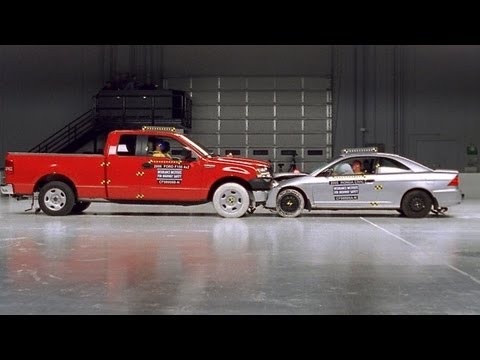
This image is property of i.ytimg.com.
Visibility and Blind Spots
Limited Visibility
Despite the advantages offered by the high driving position of full size trucks, limited visibility can still be a concern. Their larger size can create blind spots, particularly in areas around the rear and sides of the vehicle. These blind spots may make it challenging to detect smaller vehicles, pedestrians, or objects in close proximity. As a result, drivers of full size trucks need to exercise extra caution and employ additional safety measures to compensate for these limitations.
Blind Spot Detection Systems
To address the issue of limited visibility, many full size trucks are equipped with blind spot detection systems. These systems utilize sensors and cameras to monitor the vehicle’s surroundings and alert the driver to the presence of vehicles or objects in their blind spots. This technology provides visual or audible warnings, helping drivers make safer lane changes and reducing the risk of collisions caused by blind spot-related incidents.
Backup Cameras
Another safety feature that enhances visibility and mitigates blind spot issues in full size trucks is the integration of backup cameras. These cameras are mounted at the rear of the vehicle and provide a live video feed to the driver, displaying the area behind the truck when it is in reverse. By offering a clear view of obstacles, pedestrians, or other vehicles in the truck’s path while backing up, backup cameras significantly reduce the risk of accidents and help prevent collisions.
Handling and Maneuverability
Center of Gravity
A critical factor affecting the handling and maneuverability of full size trucks is their higher center of gravity compared to cars. Due to their larger size and taller stance, trucks have a higher center of mass, making them more prone to body roll during cornering or sudden maneuvers. While automakers have implemented stability control systems to counteract this effect, drivers of full size trucks need to be conscious of their vehicle’s center of gravity and adjust their driving style accordingly to maintain control and prevent potential rollovers.
Braking Distance
The braking distance of a vehicle, which is the distance covered from the time the driver applies the brakes until the vehicle comes to a complete stop, is a crucial safety consideration. Full size trucks, due to their larger size and weight, typically have longer braking distances compared to smaller cars. Drivers of trucks need to be aware of this difference and ensure they allow sufficient distance to brake safely, especially in emergency situations. Furthermore, regularly inspecting and maintaining the braking system is essential to guarantee optimal performance and maximize safety.
Turning Radius
Full size trucks tend to have a larger turning radius compared to cars, which can impact maneuverability, particularly in tight spaces or congested areas. Drivers of full size trucks need to plan their routes accordingly, taking into account the vehicle’s turning radius to navigate corners, parking lots, and other situations that require sharp turns. It is important to be patient and allow sufficient time to safely execute turns without compromising the safety of other road users.
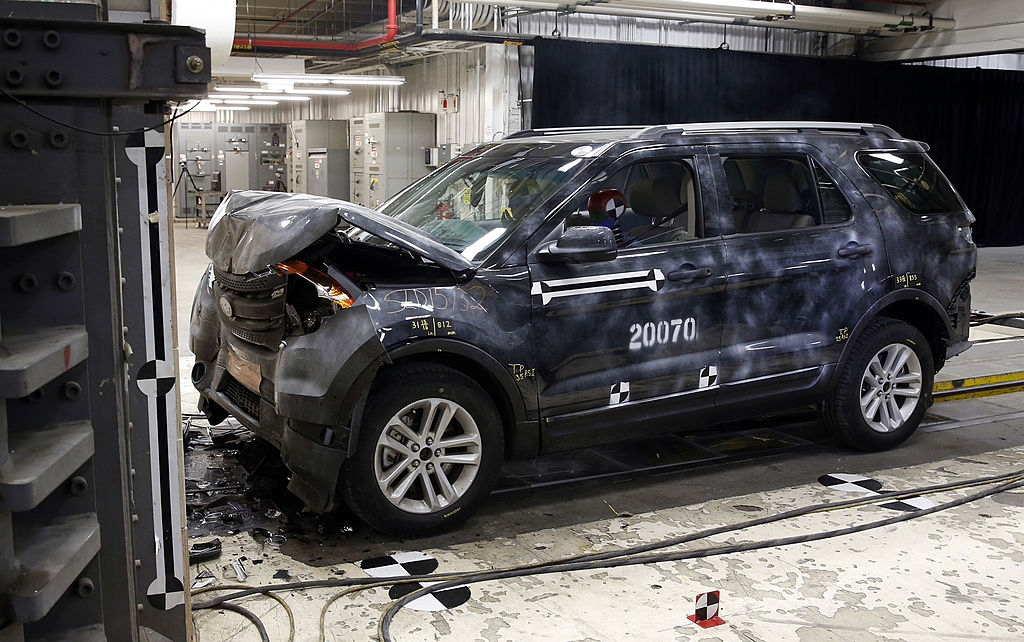
This image is property of www.motorbiscuit.com.
Driver Fatigue and Distraction
Physical Exhaustion
Truck drivers often face long hours on the road, which can lead to physical exhaustion and increase the risk of accidents. Fatigue impairs reaction time, decision-making abilities, and overall attentiveness, making it more challenging to respond to potential hazards effectively. To counteract physical exhaustion, full size trucks are equipped with ergonomic seating, adjustable driving positions, and features such as heated and ventilated seats to enhance driver comfort. Regular breaks, proper rest, and adherence to regulated hours of service help mitigate the risks associated with physical exhaustion.
Cognitive Fatigue
Cognitive fatigue, which arises from mental demands placed on drivers, can also contribute to accidents. The prolonged focus required during long-haul drives can lead to a decline in attention, concentration, and situational awareness. To combat cognitive fatigue, full size trucks often incorporate technologies such as adaptive cruise control, lane departure warning systems, and driver-assistance features that can help alleviate the mental strain on drivers. These technologies provide additional support and enhance safety by reducing the cognitive demands placed on truck drivers.
In-Cab Technologies
Full size trucks are equipped with various in-cab technologies designed to enhance driver safety and reduce distractions. These technologies include voice-activated controls, hands-free phone connectivity, and integrated infotainment systems that provide access to navigation, music, and other features. By enabling drivers to perform tasks without taking their hands off the steering wheel or their eyes off the road, these technologies reduce distractions and enhance overall safety.
Carbon Footprint and Environmental Impact
Fuel Efficiency and Emissions
When considering the environmental impact of full size trucks, fuel efficiency and emissions play a crucial role. Traditionally, full size trucks have been notorious for their lower fuel efficiency compared to smaller cars. However, with advancements in technology, many full size trucks now offer improved fuel economy, thanks to features such as direct injection, variable valve timing, and aerodynamic enhancements. Additionally, manufacturers have focused on reducing emissions by introducing cleaner-burning engines and implementing stricter emission standards to meet regulatory requirements.
Alternative Fuels
To further reduce their carbon footprint, full size trucks are embracing alternative fuels. Ethanol-blended gasoline, which utilizes renewable resources, is increasingly used as a fuel option in many trucks. Additionally, compressed natural gas (CNG) and propane offer cleaner-burning alternatives, significantly reducing emissions compared to traditional gasoline or diesel engines. The adoption of alternative fuels helps mitigate environmental impact and contributes to a more sustainable future.
Electric Full Size Trucks
The electric vehicle revolution has not left full size trucks untouched. Manufacturers are now exploring electric alternatives for these larger vehicles, aiming to combine the capabilities of full size trucks with zero-emission mobility. Electric full size trucks offer the potential to reduce carbon emissions, decrease noise pollution, and eliminate dependence on fossil fuels. While still a developing segment, the introduction of electric full size trucks demonstrates a commitment to sustainability and a shift toward a greener transportation industry.
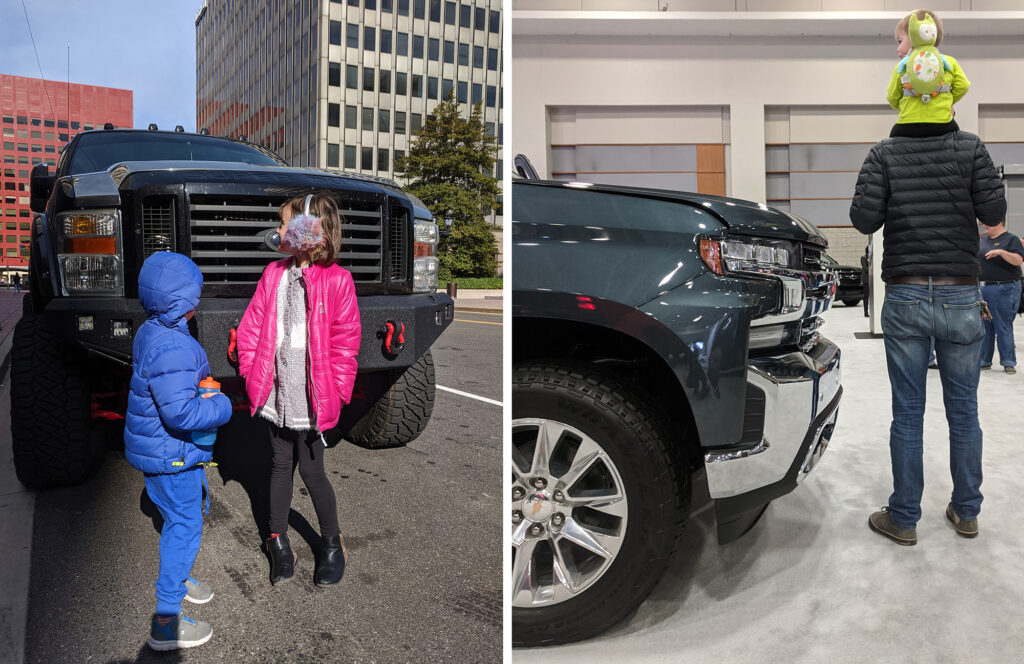
This image is property of smartgrowthamerica.org.
Off-Roading and Safety Issues
Suspension Systems
Full size trucks are renowned for their off-roading capabilities, and this presents unique safety considerations. Off-roading often involves traversing uneven terrains, steep slopes, and rough surfaces. To ensure safety, full size trucks are equipped with specialized suspension systems that provide improved stability, wheel articulation, and shock absorption. These systems allow the trucks to maintain better control over challenging terrain and ensure a safer off-roading experience.
Tire Traction
Tire traction is a critical factor when it comes to off-roading safety. Full size trucks are fitted with larger and more aggressive tire treads that offer enhanced grip and traction on various surfaces, including mud, gravel, and snow. The increased traction allows for better control and maneuverability, reducing the risk of slipping or skidding in off-road conditions. Additionally, full size trucks often come with advanced traction control systems that optimize power delivery to the wheels, further enhancing their off-road performance and safety.
Roll-Over Risks
Due to their higher center of gravity, full size trucks have a heightened risk of rollovers compared to cars. This risk is particularly significant when engaging in off-roading activities. To mitigate this danger, full size trucks are equipped with features such as electronic stability control, roll mitigation systems, and advanced traction control. These safety features actively work to prevent or minimize the risk of rollovers by monitoring vehicle dynamics and applying corrective measures, such as selective braking and adjusting power delivery to individual wheels.
Insurance Rates for Full Size Trucks
Higher Collision and Comprehensive Coverage
As full size trucks are typically more expensive to repair or replace than smaller cars, insurance rates for these vehicles tend to be higher. The cost of collision and comprehensive coverage, which includes protection against accidents, theft, and damage caused by factors other than collisions, is generally higher for full size trucks. Insurance providers consider the higher replacement costs, repair expenses, and potential risk associated with these larger vehicles when determining premiums.
Risk of Injury to Others
The larger size and weight of full size trucks can pose a greater risk of injury to occupants of smaller vehicles in the event of a collision. This increased risk can potentially lead to higher insurance rates. The potential for greater damage and injury caused by a full size truck in an accident may result in increased liability coverage requirements and subsequently higher premiums.
Theft Rates
Full size trucks have long been a target for thieves due to their popularity and value. As a result, insurance rates for these vehicles might be influenced by the higher theft rates. Insurance providers take into account the likelihood of a vehicle being stolen when determining coverage premiums. The risk of theft can ultimately impact the costs associated with comprehensive coverage of full size trucks.
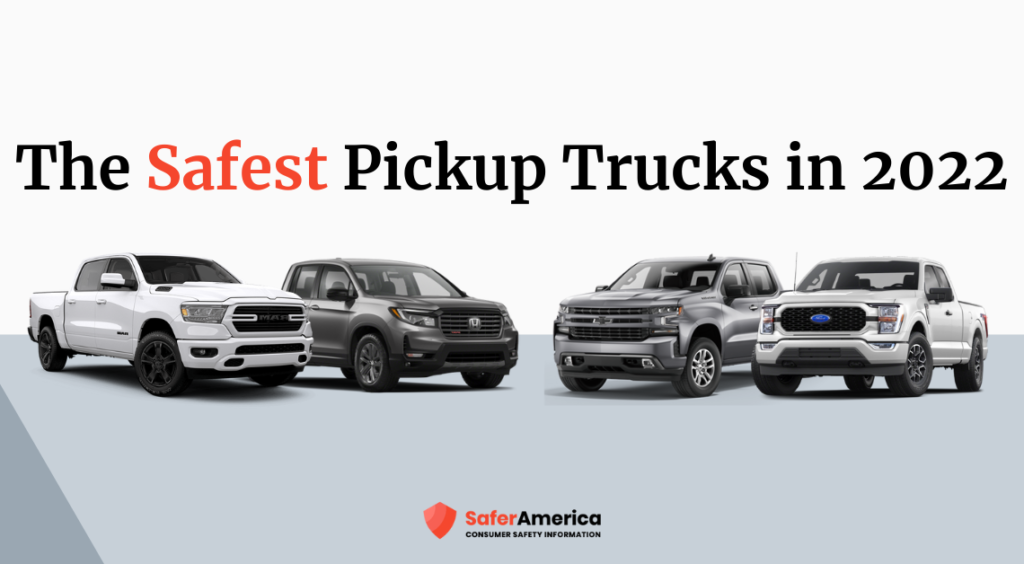
This image is property of safer-america.com.
Comparing Full Size Trucks to Cars
Vehicle Type and Purpose
Full size trucks and cars serve different purposes and are designed for distinct types of usage. Full size trucks are primarily built for utility, offering towing and hauling capabilities, off-roading capabilities, and greater cargo capacity. Cars, on the other hand, are typically more focused on passenger comfort, fuel efficiency, and agility. When comparing safety between full size trucks and cars, it is essential to consider the intended usage and individual needs of the driver.
Occupant Protection
While both full size trucks and cars incorporate safety features, the differences in design and size can impact occupant protection. The larger size and weight of full size trucks generally provide better protection in a collision, particularly in crashes involving smaller vehicles. However, modern car designs, advanced safety features, and structural improvements have significantly enhanced occupant protection in cars as well.
Cost Considerations
Price is a significant factor when comparing full size trucks and cars. Full size trucks, on average, tend to be more expensive than cars due to their larger size, increased capabilities, and added features. The cost of ownership, including maintenance, fuel, insurance, and depreciation, can also vary significantly between the two vehicle types. It is essential to consider these cost differences when making a comparison, as they can impact the overall value and affordability of each option.
Personal Preferences
Ultimately, the decision between a full size truck and a car is driven by personal preferences, needs, and lifestyle choices. Some individuals may prioritize the towing and hauling capabilities of a full size truck, while others may prioritize fuel efficiency and maneuverability offered by cars. When assessing safety, it is essential to align the features and characteristics of each vehicle type with individual preferences to ensure the chosen vehicle meets specific safety requirements and suits the intended purpose.
Legal Requirements and Regulations
Licensing and Endorsements
Driving a full size truck requires the appropriate driver’s license classification. In many jurisdictions, a standard driver’s license (Class D) is sufficient for operating a regular full size truck. However, larger trucks, such as those with a Gross Vehicle Weight Rating (GVWR) above a certain threshold, may require a specialized commercial driver’s license (CDL). Additionally, certain types of endorsement may be necessary, such as air brake endorsement or hazardous materials endorsement, depending on the specific truck configuration and intended usage.
Safety Standards
Full size trucks are subject to safety standards set by regulatory authorities, such as the NHTSA and the Department of Transportation (DOT). These standards encompass various aspects, including crashworthiness, occupant protection, braking performance, lighting, and other safety-related components. Compliance with these safety standards is mandatory for the sale and operation of full size trucks, ensuring a minimum level of safety across all vehicles.
Weight and Load Restrictions
Depending on the jurisdiction and the specific truck’s weight class and configuration, weight and load restrictions may apply. Full size trucks may be subject to specific weight limitations to ensure safe operation on public roads and bridges. These restrictions help prevent overloading, which can compromise handling, braking performance, and overall safety. Compliance with weight and load regulations is crucial to avoiding potential fines, penalties, and, more importantly, maintaining safe driving conditions for both the truck driver and others on the road.
In conclusion, full size trucks offer a range of safety features that make them a viable option for those in need of a versatile and capable vehicle. The advanced braking systems, stability control, and larger size contribute to enhanced safety on the road. Visibility and blind spot detection systems mitigate limited visibility concerns, while handling and maneuverability considerations help drivers navigate safely. Driver fatigue and distraction are addressed through in-cab technologies and ergonomic design. The growing focus on minimizing the carbon footprint and environmental impact has led to improvements in fuel efficiency, the adoption of alternative fuels, and the emergence of electric full size trucks. Safety features specific to off-roading ensure safe adventures, while insurance rates consider factors such as vehicle replacement costs and potential risks. Comparing full size trucks with cars requires considering their different purposes, occupant protection levels, cost considerations, and personal preferences. Legal requirements and regulations, including licensing, safety standards, and weight restrictions, also contribute to ensuring the safe and responsible operation of full size trucks. Overall, full size trucks offer a compelling combination of safety features, ruggedness, and versatility, making them a choice worth considering for those seeking a capable and secure vehicle.
